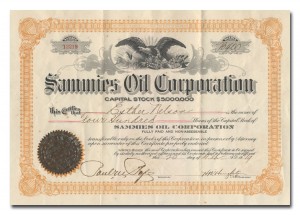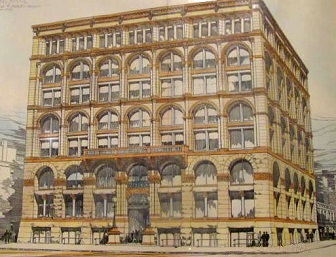by Bruce Wells | Aug 21, 2015 | Petroleum Companies

The Texas oil patch was making headlines as World War I raged in Europe. An earlier major discovery at Electra had launched a drilling boom that brought new exploration and production companies to nearby Wichita Falls. (more…)
by Bruce Wells | Sep 17, 2013 | Petroleum Companies


Architectural drawing of the Boston Building in Denver.
In 1917 and 1918, with the United States fighting in World War I, the Double Standard Oil & Gas Company sought investors for the booming oilfields.
“Double Standard Oil & Gas Company is the owner of valuable oil leases in Kansas, Oklahoma, and Wyoming,” the company told potential investors. (more…)




